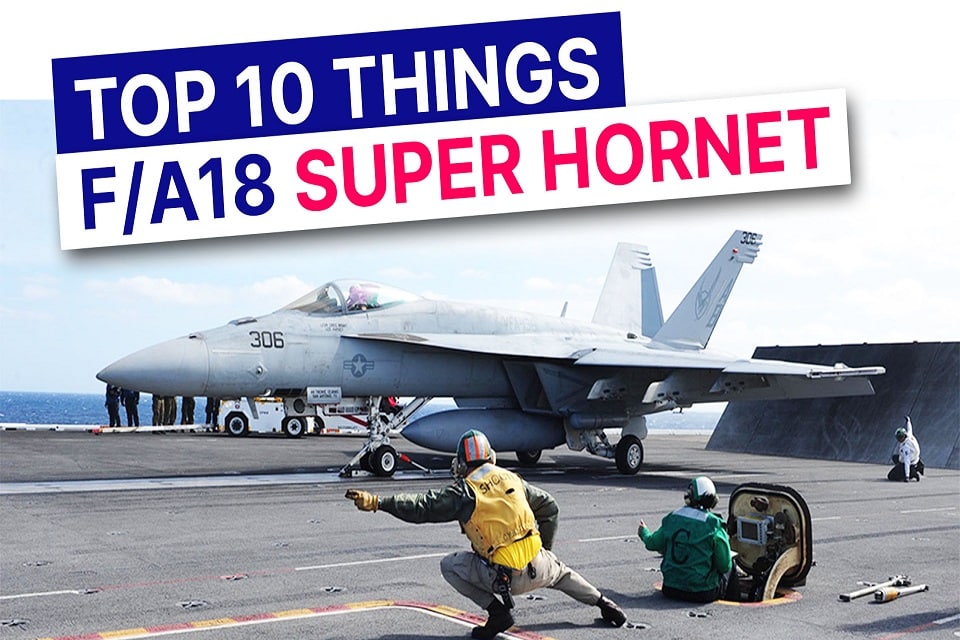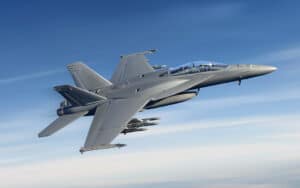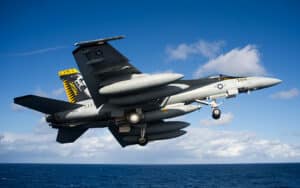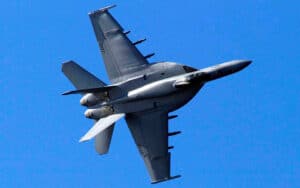Aerospace
Mind blowing facts about US Navy F/A 18 super Hornet fighter jet

This super Hornet has distinguished itself in combat zones as a deterrent or frontline offence, as well as at home providing security and defense to the United States and other countries, thanks to its proven capabilities. Because there are so many interesting facts about the F/A 18 Super Hornet, we’re looking at things we didn’t know about it.
- It was built in 1978
The Boeing F/A-18 Hornet is a fighter plane that was originally built by McDonnell-Douglas. It flew for the first time in 1978 and was initially introduced in 1983. The United States Navy is its primary customer. Because of its unique design, it can take off from aircraft carriers. The F/A-18 is capable of attacking both land and air targets. “Multi-role” refers to any aircraft that can accomplish this.
2. Air superiority, day/night strike
The F/A-18 Block III, the latest version of the F/A-18, can conduct a variety of tactical tasks including air superiority, day/night strike, and precision guided munitions. The single-seat E model and the two-seat F model of the Super Hornet are capable of performing virtually every tactical mission, including air superiority, day/night strike with precision-guided weapons, fighter escort, close air support, suppression of enemy air defenses, maritime strike, reconnaissance, forward air control, and tanker missions.
3. Combat operations for at least another decade.
Despite the fact that the 5th generation fighter aircraft in the US inventory has experienced repeated delays and cost overruns, the US Navy has no plans to retire the F/A 18 program, as the Department of Defense has approved a Block 3 upgrade of the F/A 18 fleet, which will allow it to continue performing combat operations for at least another decade. It has given its approval to enhance its version to compete with fighters of the fifth generation.
4. Next Gen single cockpit ACS Display.
The ACS in Super Block 3 improves pilot situational awareness and is a next-generation Block III feature. A new 10 x 19-inch touchscreen display in the Advanced Cockpit System allows the pilot to monitor, track, and target multiple long-range targets. Multiple functions can be controlled from a single Super Hornet large-area display.
5. It has max take of weight is up to 29,937 kg.
This fighter has a 37.5-inch wing spread, a 56-foot length, and a height of 15.3 feet. It has a maximum take-off weight of 29,937 kg, a maximum speed of 1,915 km/h, a range of 2,346 km, and a ferry range of 3,330 km. It accelerates climb to 228 meters per second. It also has a design load factor of 7.6 G.
6. It has Buddy refuel system.
It will be equipped with an aerial refueling system (ARS) or “buddy store” that will allow it to refuel other aircraft, making it a tactical airborne tanker. While the Super Hornet’s primary purpose is as a fighter, it also serves as a fuel tanker, proving its multi-role categorization. By adding external refueling equipment and five external fuel tanks, the aircraft can be turned into an airborne tanker. It has a maximum external fuel capacity of 5,914 kg and an internal fuel capacity of 6,241 kg. This is the massive capability.
7. It can carry massive weapons in its pod.
A quick glance at the Super Hornet’s weaponry reveals its enormous destructive potential: Joint Stand-Off Weapon; Joint Direct Attack Munition; Data Link Pod; Paveway Laser Guided Bomb; Harpoon, Harm, SLAM, SLAM-ER, Maverick missiles; Harpoon, Harm, SLAM, SLAM-ER, Maverick missile.
8. Easy to Maintain and Repair.
This fighter has a two-seater version, which allows it to fly for longer and operate efficiently in a battle zone. The F/A 18 was designed to be easy to maintain and repair, allowing it to fly for longer periods of time. Years later, this proved to be correct, since Super Hornets required less maintenance than other aircraft (75 percent less maintenance per hour of flight time than its predecessor, the F/A 14).
Indian LCA combat aircraft now being armed with American JDAM
9. It has folding wing option.
Because this aircraft has foldable wings, it takes up less space aboard the aircraft carrier and allows for more aircraft to be loaded. It’s perfect for catapults and other types of aircraft carrier ramps. An aircraft catapult is a system that enables aircraft to take off from a limited space and Ski-jump that can take off solely on the force of its engine. The Super Hornet may be outfitted for navy missions and has an arresting hook that can be deployed in a limited location and stopped in seconds.
This firm has awarded Boeing a new contract for up to 150 B737 max planes.
10, Blue Angel to use F/A 18 for aerobatic display.
The improved version of the F/A 18 Super Hornet flew for the first time in 1995, and by 2020, the business will have completed almost 608 units. The United States, the Royal Australian Air Force, and the Kuwaiti Air Force have all utilised this aircraft. The Super Hornets will be used by the US Aerobatic team Blue Angels in future . The F/A 18 was built for a total cost of $66.9 million.
India’s Chinook Helicopter Creates A New Unique Record

Aerospace
When Ratan Tata was denied entry to the airfield at the Aero India show, he waited

During our visit to Aero India 2019, we had the unexpected opportunity to see Ratan Tata at the event, which was a thrilling moment for us. However, there was a surprising hiccup when the security staff didn’t allow him to enter due to a lack of a security pass.
Despite this, he remained calm and patiently waited for about 20 minutes until a member of the Tata team brought him the required pass, after which he calmly proceeded inside. It was a humbling sight, showcasing his composed demeanor even in such situations.
Ratan Tata ji is not only a renowned industrialist but also a trained pilot, holding a pilot’s license. In 2007, he became the first Indian civilian to fly the F-16 Falcon during the Aero India show in Bangalore—a proud moment for the nation.
His passion for aviation extended beyond flying, as he played a key role in shaping India’s aerospace industry. Under his leadership, Tata ventured into manufacturing and maintaining aerospace components while upholding its legacy of quality. Notably, Tata’s collaboration with Airbus to develop and manufacture the C295 aircraft is a testament to its growing influence in the sector.
-

 Aviation2 months ago
Aviation2 months agoMicrosoft Flight Simulator Raises $3 Million to Bring Back the An-225 Mriya
-

 Airlines2 months ago
Airlines2 months agoQatar Citizens Can Travel to the United States Without a Visa
-

 Aviation2 months ago
Aviation2 months agoQatar Airways bans these new Electronic Devices on plane
-

 Airlines2 months ago
Airlines2 months agoJapan Airlines Rolls Out Free Domestic Flights to International Passengers
-

 Travel2 months ago
Travel2 months agoQatar Airways Launches Four Additional Flights from Amsterdam
-

 Defence2 months ago
Defence2 months agoWhich Country Has the Largest Fleet of Fighter Aircraft?
-

 Airport2 months ago
Airport2 months agoWestern Sydney Airport Welcomes Its First Plane After 6 Years of construction
-

 Airlines4 days ago
Airlines4 days agoDAMAC Air: Dubai’s New Luxury Airline Offers Free Flights for Registration











